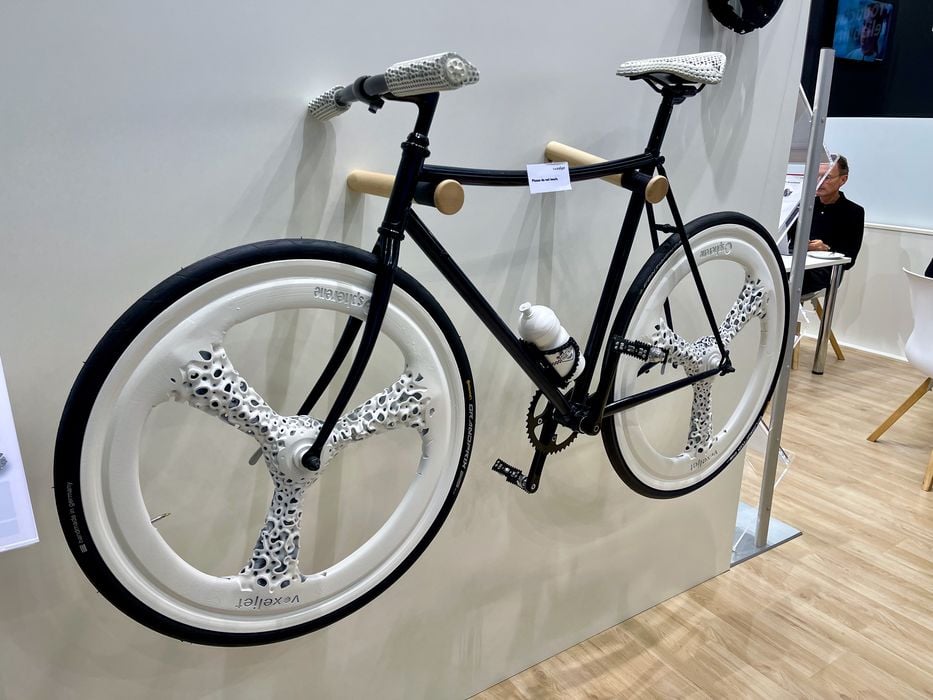
This week’s selection is the 3D printed bicycle by voxeljet, Mungo Racing and Spherene.
Seen at last month’s Formnext exhibition, the bike exhibits a number of very interesting properties.
The entire bike is not 3D printed, of course, but has a number of critical components that were produced using 3D print technology. Specifically, that technology was voxeljet’s HSS process, where they were able to produce parts in both PA12 and TPU materials.
Collaborators on the project were Spherene, a Swiss company that produces software to generate “the most efficient geometry for any structure” using advanced algorithms. As you can see in the images of the cycling components, they were indeed quite complex.
Mungo Racing Team also worked on the project, no doubt providing expertise regarding the bike design.
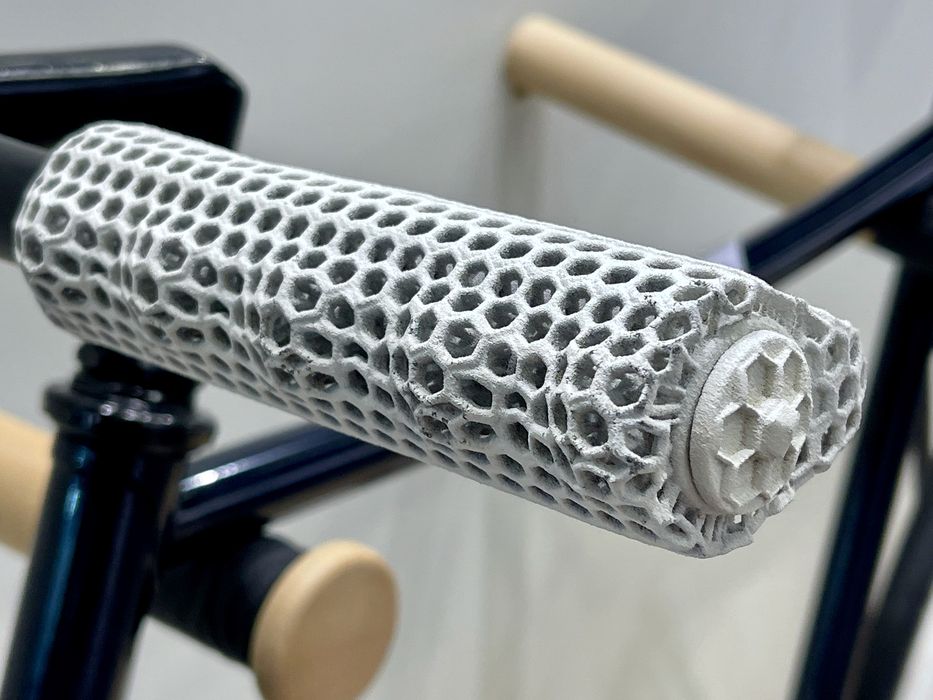
Finally, Covestro, a major producer of 3D print materials, also collaborated on the project and provided the PA12 and TPU materials used in the HSS prints.
The project was undertaken to demonstrate the capabilities of the new HSS materials, and evidently succeeded. The bike is apparently ridable, and one would certainly gain some stares from passersby if riding downtown.
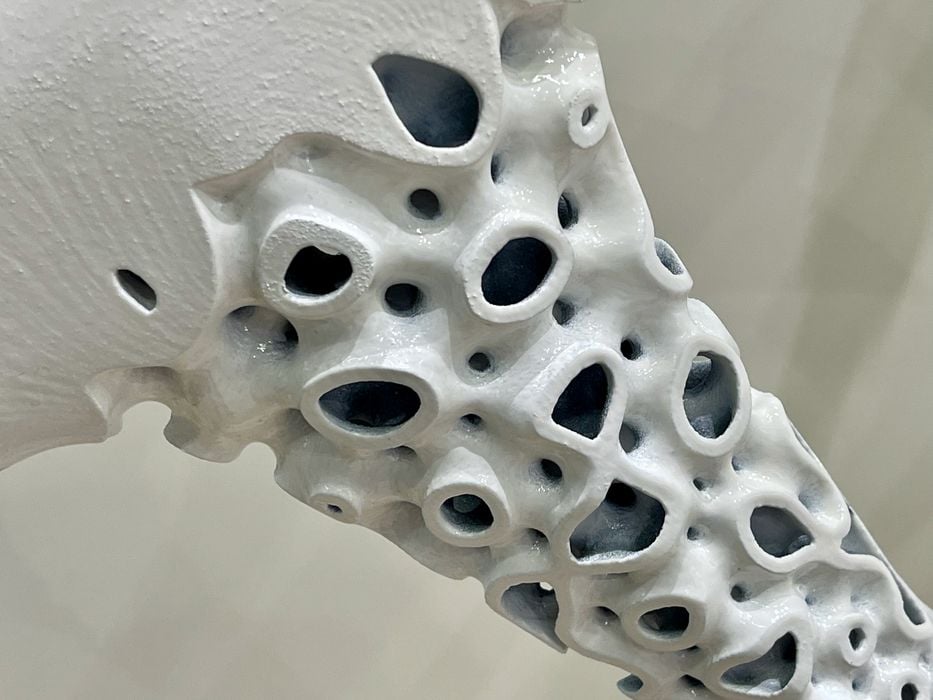
The wheel is the most striking visible element of the bike demonstration. With the spokes replaced with gigantic, weirdly shaped equivalents, it’s not only different, but exudes the feeling of strength.
I’m curious about the generative design here, as it doesn’t seem to be the typical lattice structure that would appear to be optimal. Instead it’s a strange octopus-like surface that is certainly lightweight.
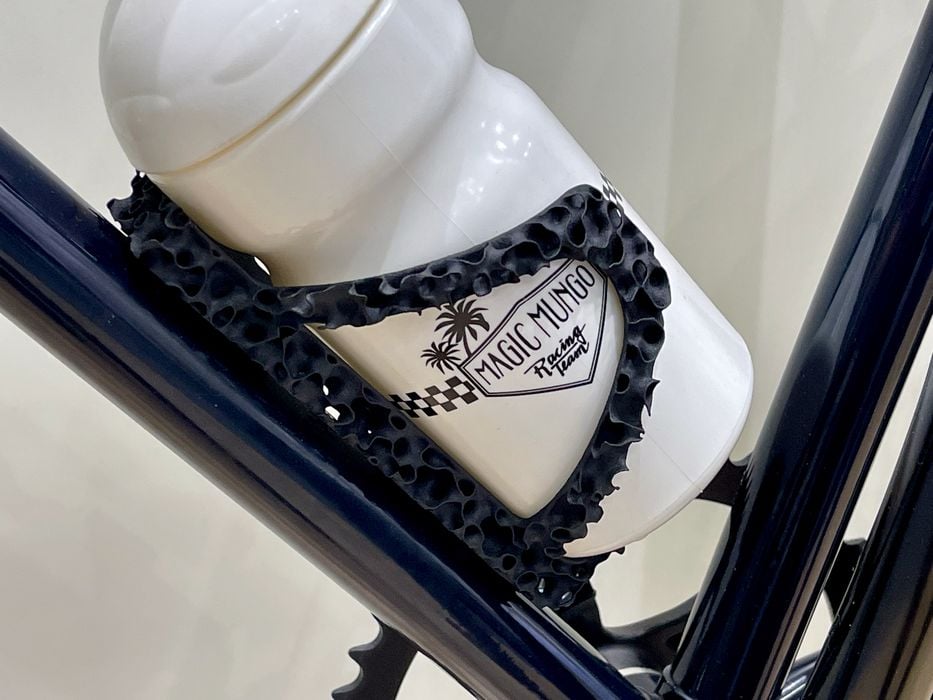
Other components on the bike were 3D printed, including the bottle holder here.
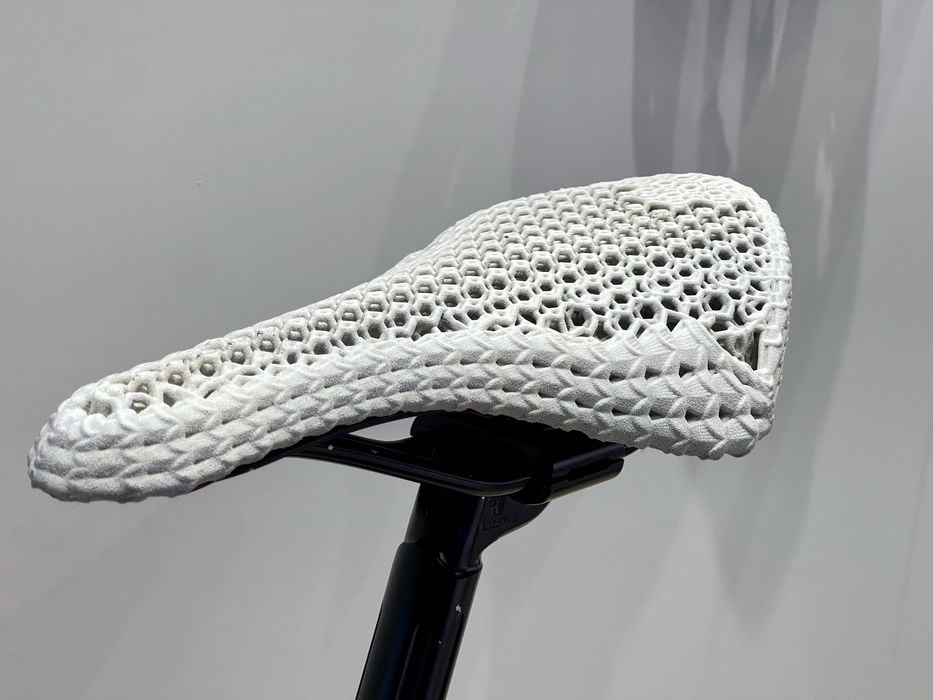
The TPU material was used for the seat, which has to have just the right amount of softness for riders. The surface is of the seat is also quite complex, and I wonder if riders will get an abrasion from the surface? It’s also possible one could wrap the seat in a lightweight, friction-free cloth and enjoy the ride.
While not necessarily a production 3D print, the bike does show off the possibilities of these two new materials, and could inspire others to make innovative use of the technology.
Via voxeljet, Spherene, Mungo Racing Team and Covestro
